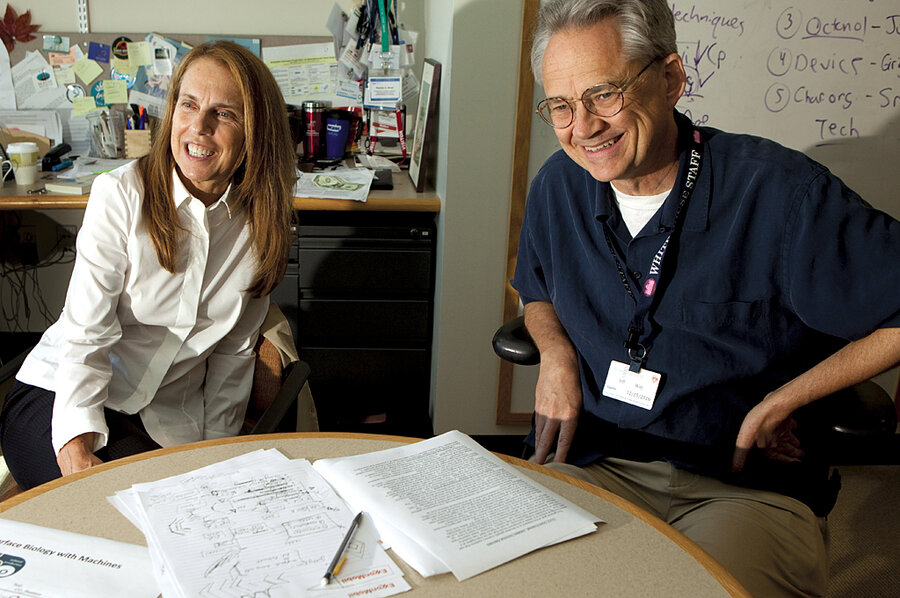Post oil: Electrofuels are an oil-substitute minus the eons
Loading...
Over millions of years, natural processes turned the buried remains of dinosaurs, plants, and ancient fish into crude oil.
Pamela Silver and her colleagues aim to compress the oil-forming process to nearly instantaneous, with some carbon dioxide, a dash of electricity, and a lot of help from the diminutive star of her Harvard Medical School lab in Boston: Shewanella oneidensis, a bacteria found in deepwater sediment. Dr. Silver's goal is to overhaul Shewanella's biochemical digestive system to produce octanol, a hydrocarbon that can be refined and turned into a range of transportation fuels.
The overhaul is challenging, Silver acknowledges. But the hurdles researchers must clear to make progress at each stage in the project are significant enough that "you could succeed in one point and fail in another, but it would still be a home run," she adds.
The team is fueled by a grant from the US Energy Department's Advanced Research Projects Agency – Energy (ARPA-E). The agency is working with the Defense Department as the US military begins to shift from petroleum-based fuels to "drop in" biofuel replacements that can be used with today's internal-combustion engines.
Less exotic approaches to produce biofuels already have supplied the military with limited amounts of petroleum-biofuel blends. In the near term, analysts say, the military probably will rely on companies that use such approaches to meet its renewable-fuel goals.
But these simpler processes can require large amounts of water, and they release carbon dioxide, an atmospheric greenhouse gas.
If Silver's team – one of 13 ARPA-E is funding to explore what it dubs "electrofuels" – is successful, it could help replace oil wells with bioreactors that run on wind, solar, or other renewable sources of electricity. Inside the bioreactors, electrified, re-engineered microbes would convert carbon dioxide gas into hydrocarbons that oil refineries could work with.
It's not quite as micro-Frankensteinian as it might sound.
Shewanella, discovered in the oxygen-starved sediment beneath New York's Oneida Lake in 1988, has an intriguing trait: It generates a tiny electric current as it feeds on carbon-poor sources, such as metals, also buried in the muck.
But it produces more electrons than it needs. The excess flows through tiny biological wires in Shewanella's cell walls back to the outside world. The organism, in effect, comes prewired.
Silver and her team aim to use genetic engineering techniques to throw that pint-size generator into reverse. Electric current, supplied from outside the cell, would become Shewanella's source of energy, rather than its waste. They also want to change Shewanella's diet from carbon-poor sources to carbon dioxide, then install the genetic machinery to produce the octanol, which Shewanella would excrete as waste.
Despite the challenges, says Silver, the good news is that "we don't have to get to a commercialized organism; we just have to get to a proof of concept."





